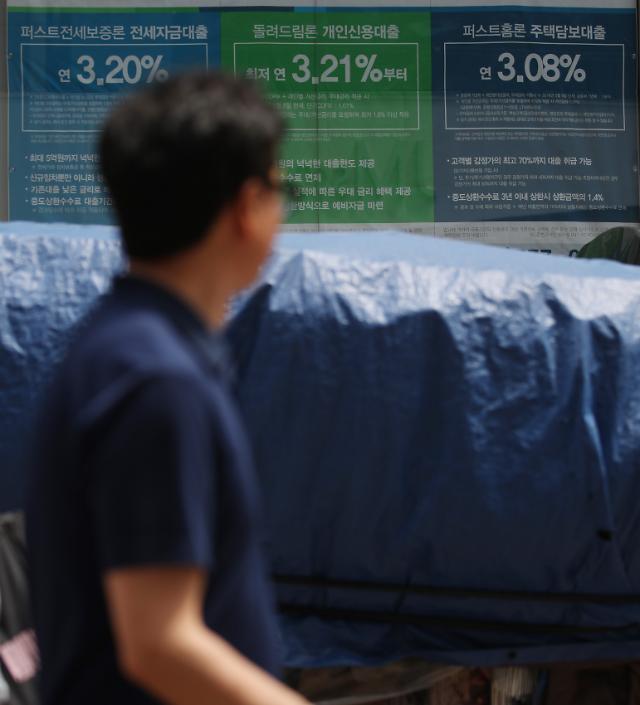
[Yonhap Photo]
SEOUL -- Despite an intensive government campaign to reduce individual debts, South Korea's household loans have been growing fast at an average annual rate of 6.2 percent since 2008, exceeding the corporate loan growth rate of 5.4 percent, according to data from the Financial Supervisory Service.
Since the 2008 financial crisis, South Korean banks have focused on household loans, catering to strong demands for mortgage loans which have risen sharply due to eased real estate regulations.
Conservative credit practices that focused on collateral and guarantees have intensified due to a possible fall in profit as credit costs increase. Banks responded by increasing risk management strategies to cope with tightened capital regulations.
"Banks have been operating business centered on household loans for a while. It was a rational decision in line with the market situation," an official from the Financial Supervisory Commission, the country's financial watchdog, said, suggesting it is necessary to induce the expansion of corporate finance by strengthening institutional devices.
Low-interest rates have also contributed to the increase in demand for mortgage loans. As the risk-adjusted return, which means excluding the interest rate from credit losses, was higher in household loans than in corporate loans, banks have concentrated their work on solving problems that may arise from household loans.
A report issued by the International Monetary Fund in February showed that the growth of household credit has increased the ratio of household debt to GDP, posing a risk to South Korea's economic growth and financial stability. The report also cited a low level of interest rates which exacerbated the risk from a large rise in interest rates on household debt, which can lead to a deterioration in asset quality.
South Korean financial authorities are building resilience by upgrading the non-bank financial institution (NBFI) supervision so as to harmonize it with banks and promote more rigorous bank credit assessment.
As wealthy households are generally able to cover debt repayment, new government initiatives are targeting lower-income and highly leveraged borrowers where risks are concentrated. Such measures will aid debt restructuring and support repayment in the event of distress such as writing off around $6 billion of debt of 1.6 million people earning less than $1,000 per month.
With both corporate and household loans posing an almost equal amount of risk, the increase in demand for household loans raises concerns of a sluggish economy.
This story was contributed by Jazin Wee, an editorial assistant.


![[Financial forum] Banker calls for designation of financial industry as priority growth sector](https://image.ajunews.com/images/site/img/ajunews/list_noimg.jpg)